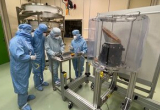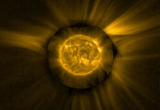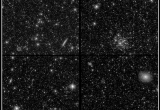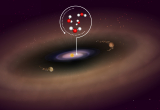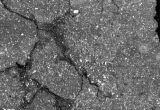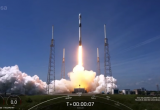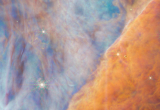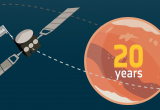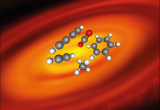During 2023, IAS was able to test 3 Flight cameras (PFM, FM4, FM5) at the Calibration Station. The last camera was finished testing in the second week of December. All of the tests of these cameras took a little over 6 months, during which thermal vacuum tests were carried out as well as scientific performance tests. A team of about twenty people from IAS and the Station worked to enable these tests. Congratulations to all for this major achievement!
You are here
Archive
In December 2020, the Hayabusa2 spacecraft brought back to Earth 5.4 grams of samples from the primitive asteroid Ryugu. These grains were collected in two locations, with one collection after an artificial impact that excavated subsurface material. The entire collection is being analysed at JAXA’s Curation Facility (Sagamihara, Japan), under a controlled atmosphere to prevent contamination of the samples by the terrestrial atmosphere.
A last minute modification of the EUI (Extreme Utraviolet Imager) instrument on board the Solar Orbiter mission provides new views of our star's corona. The corona is a very tenuous medium and dedicated telescopes called coronagraphs are needed to observe it. FSI (Full Sun Imager), the wide angle channel of EUI, is the first coronagraph imaging in the extreme UV.
Euclid’s two instruments have captured their first test images. The mesmerising results indicate that the space telescope will achieve the scientific goals that it has been designed for – and possibly much more.
Although there are months to go before Euclid delivers its true new view of the cosmos, reaching this milestone means the scientists and engineers behind the mission are confident that the telescope and instruments are working well.
Water is essential for life as we know it. However, scientists debate how it reached the Earth and whether the same processes could seed rocky exoplanets orbiting distant stars. The preferred mechanism is water-bearing asteroids bombarding the surface of a young planet. An international research team involving scientists from IAS has just discovered water in the inner disk of the young star PDS 70, well inside of the orbit of two growing giant planets.
Infrared spectra of anhydrous grains from the carbonaceous asteroid Ryugu indicate a connection between one of the reservoirs from which Ryugu's parent body originated and the reservoirs that formed comets and primitive asteroids in the outer protoplanetary disk.
On July 1, Euclid was successfully launched from Cape Canaveral by a Space-X Falcon 9 rocket! The acquisition of the first signals also went according to plan.
The Euclid mission will map the universe, observing thousands of galaxies over the next 6 years, and thus lift the veil on dark matter and dark energy.
The commissioning phase now begins for the next 3 months, providing an opportunity to test the in-flight calibration lamp (calibration unit) developed at the IAS.
An international research team including researchers from IRAP, ISMO and IAS (CNRS and University Paris-Saclay), LERMA, and IPAG, used the data collected by the JWST (James Webb Space Telescope, NASA/ESA/CSA) to detect for the first time the methyl cation (CH₃⁺). This detection has been obtained in the protoplanetary disk surrounding a young star in the Orion Molecular Cloud region, approximately 1300 light years from Earth. This detection is the result of a fruitful collaboration between astrophysicists, astrochemists and spectroscopists, including an essential contribution from laboratory spectroscopists.
Friday June 2nd was the 20th anniversary of the launch of the first ESA probe towards another planet, Mars. A celebration was held at the ESA control center (ESOC) in Darmstadt, Germany. Several colleagues from IAS were there representing the laboratory and the OMEGA team.
An international research team involving the IAS has just revealed the chemical composition of a disk of matter rotating around a young star, where new planets are forming. The results of this study, led by Benoît Tabone, a CNRS researcher at the IAS, were obtained in the framework of the guaranteed time programme of the MIRI instrument developed by a consortium of laboratories in Europe and the United States.



